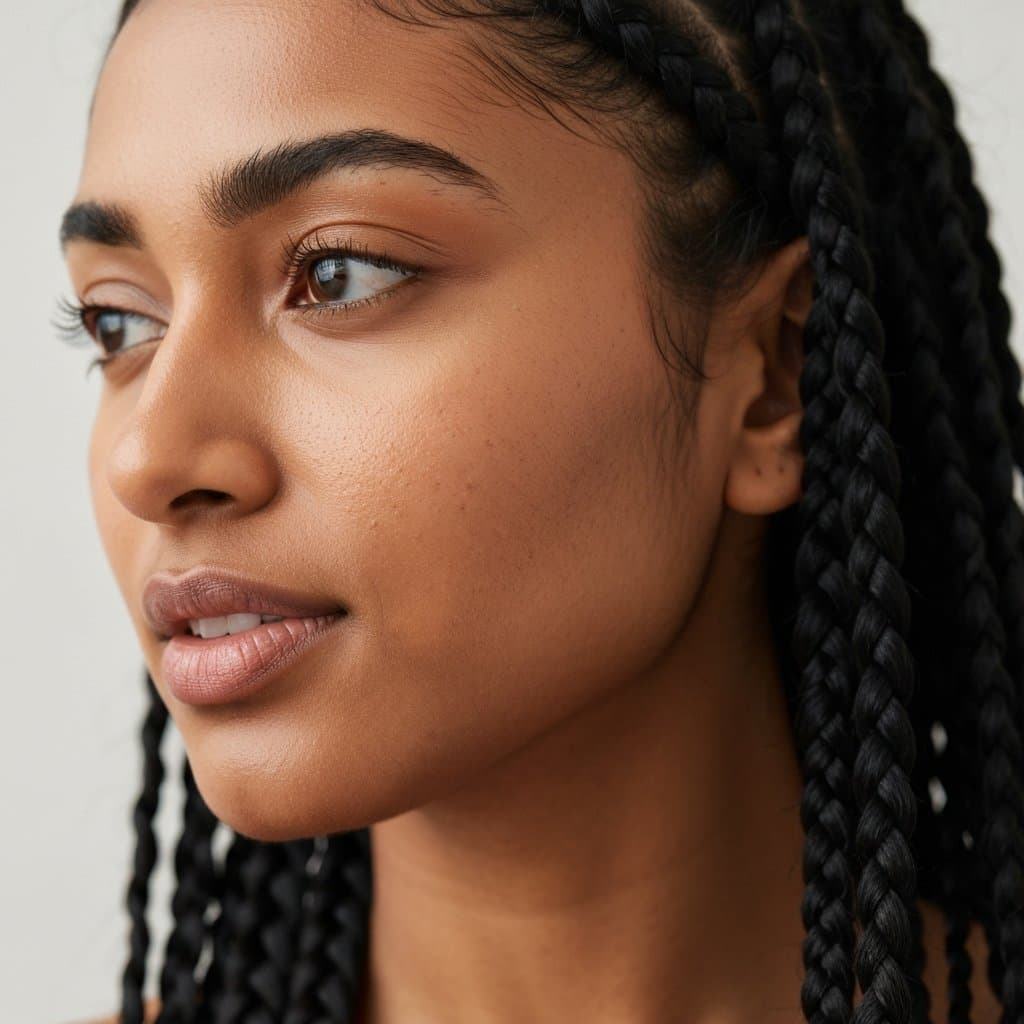Knotless Braids: The Protective Style That's Good for Your Hair | A Complete Guide
Knotless Braids: A Revolution in Protective Styling
Protective styling is a cornerstone of healthy hair care, particularly for textured and natural hair. It’s a way to shield your strands from environmental stressors, reduce daily manipulation, and retain length. For decades, traditional box braids have been a go-to choice, but they often come with a significant drawback: tension. The tight knot at the base can pull on the scalp, leading to discomfort, traction alopecia, and breakage. Enter the game-changer: knotless braids. This innovative technique has surged in popularity, not just for its flawless, natural look, but for its hair-loving, scalp-friendly approach.
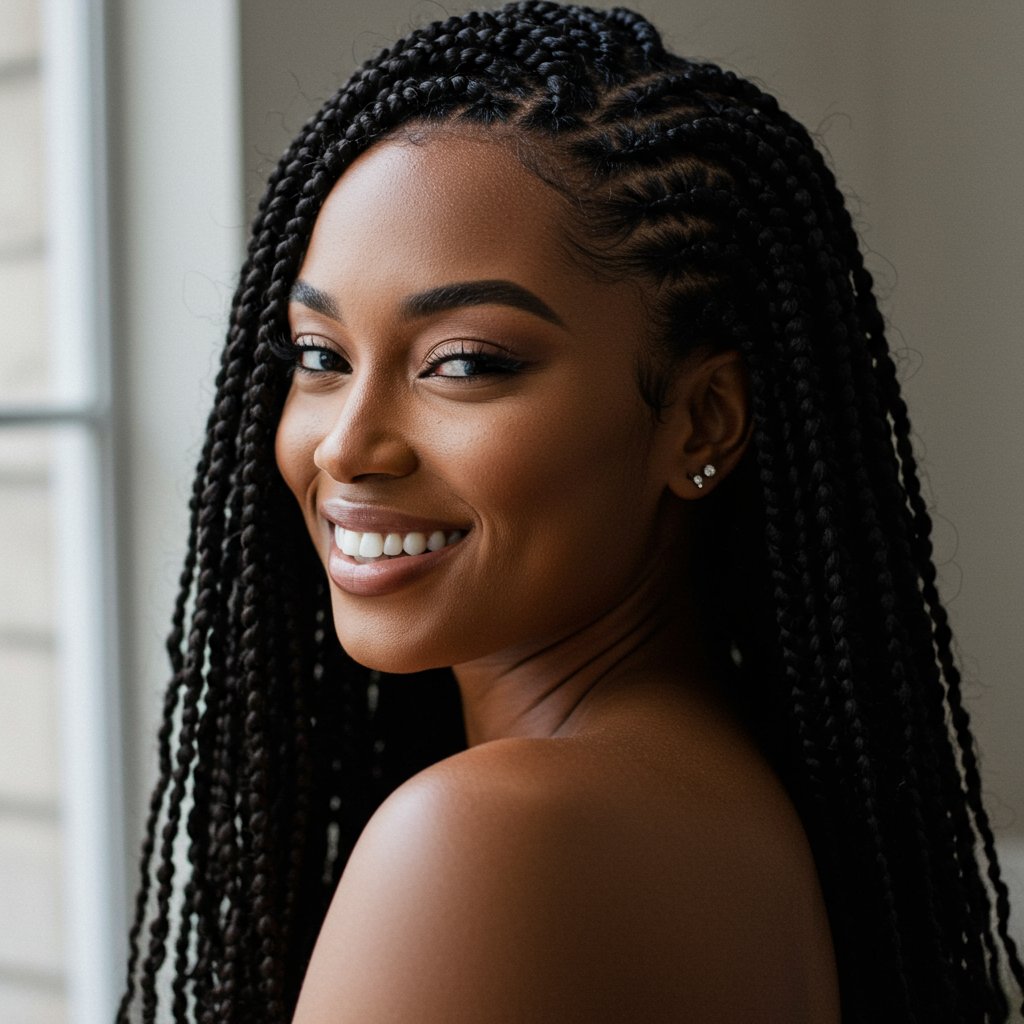
Unlike their traditional counterparts, knotless braids begin with your natural hair and gradually feed in braiding extensions. This method eliminates the bulky, tight knot at the root, resulting in a braid that lays flat and moves freely from day one. The result is a lighter, more comfortable experience that prioritizes the health of your scalp and hair follicles. If you've ever craved the beauty of braids without the initial pain or the risk of damage, this comprehensive guide will explore why knotless braids are the protective style your hair has been waiting for.
From understanding the technique to mastering maintenance and styling, we will delve into every aspect of this revolutionary hairstyle. This guide is designed to empower you with the knowledge to make an informed decision for your next salon visit, ensuring your protective style is truly protecting your hair and helping you achieve your long-term hair goals. Get ready to embrace a style that is as good for your hair as it looks.
What Exactly Are Knotless Braids? The Gentle Difference
To truly appreciate the genius of knotless braids, it's essential to understand how they differ from traditional box braids. The distinction lies entirely in the installation technique, a small change that makes a world of difference for your scalp's comfort and your hair's health. Traditional box braids start by creating a small knot at the base of the section, where the extension hair is looped around the natural hair and pulled tight against the scalp. This knot is the anchor for the braid, but it's also the primary source of tension, which can cause follicle stress, headaches, and even hair loss over time.
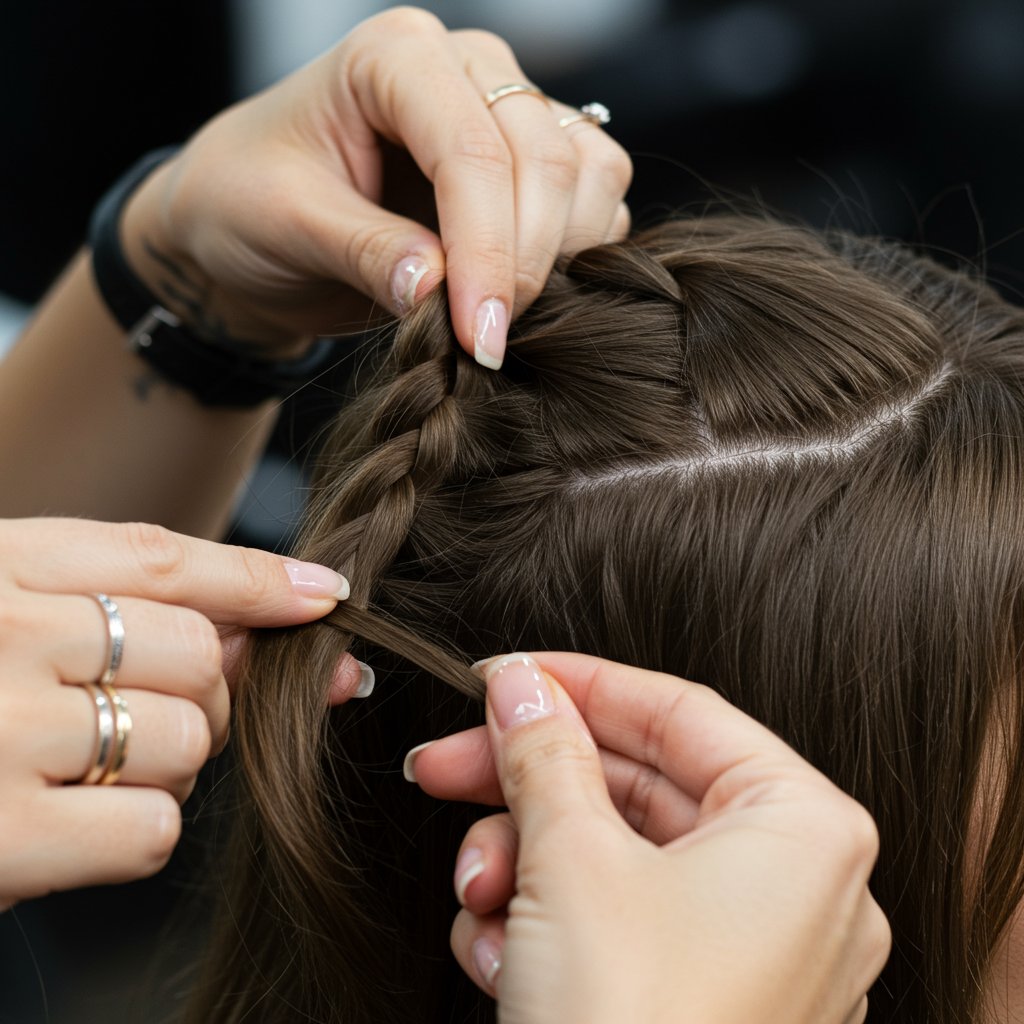
Knotless braids, on the other hand, utilize a feed-in method. The stylist begins by braiding your natural hair for a few stitches—typically a quarter to a half-inch down from the root. Only then do they begin to incrementally add small pieces of braiding hair into the braid. This gradual addition of extension hair creates a smooth, seamless transition from your natural hair to the full braid. The absence of an initial knot means the braid lays flat against the scalp without any pulling or tugging. It’s a technique that requires more skill and time but offers a significantly more comfortable and healthier result.
This gentle approach distributes the weight of the extension hair more evenly, preventing the localized stress that can damage hair follicles. The final look is sleeker and more natural, as the base of the braid blends flawlessly with your own hair. This method not only looks better but feels incredibly lightweight, allowing for immediate styling versatility without the usual waiting period for the braids to 'loosen up'.
The Unbeatable Benefits of Choosing Knotless Braids for Hair Health
The rising popularity of knotless braids isn't just a fleeting trend; it’s a direct response to a growing demand for protective styles that genuinely protect. The benefits extend far beyond aesthetics, contributing directly to the long-term health and vitality of your hair and scalp.
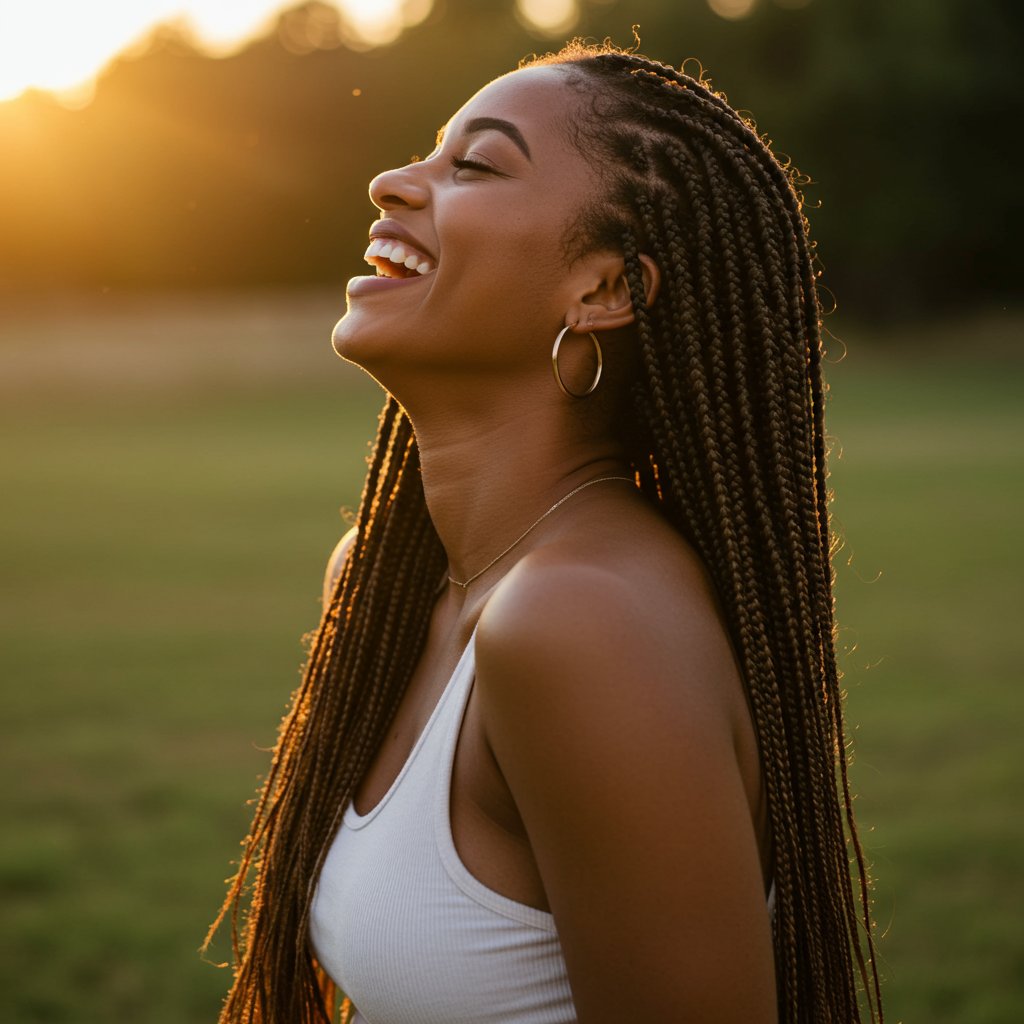
Reduced Tension and Scalp Stress
This is the number one benefit. By eliminating the tight knot at the root, knotless braids drastically reduce the tension on your scalp and hair follicles. This means no more post-installation headaches, less risk of scalp irritation, and a significantly lower chance of developing traction alopecia—a form of hair loss caused by constant pulling. For those with sensitive scalps, this technique is nothing short of revolutionary.Promotes Healthy Hair Growth
Protective styles are meant to foster an environment for hair growth by minimizing daily breakage. Knotless braids excel at this. Because they don't cause stress at the root, your follicles can remain healthy and productive. With proper maintenance—keeping the scalp clean and moisturized—your natural hair is left undisturbed to grow peacefully underneath the extensions, helping you retain length more effectively.Natural Look and Feel
Knotless braids offer a super flat, seamless look at the root that mimics hair growing directly from the scalp. This creates a more natural-looking finish compared to the sometimes-bulky start of traditional box braids. They are also incredibly lightweight, so you won't feel the heavy pull that can sometimes accompany braided styles, especially longer ones.Unmatched Versatility
One of the most frustrating aspects of traditional braids is the initial stiffness, which can limit styling options for the first week or two. Knotless braids are flexible and pain-free from the moment you leave the salon chair. You can immediately style them in a high ponytail, a bun, or any updo without wincing in pain or worrying about putting extra stress on your edges.Are Knotless Braids Right for You? Hair Types and Considerations
While knotless braids are a fantastic option for many, it's wise to consider your specific hair type and condition before booking an appointment. This style is remarkably versatile, but a few factors can influence your experience and the final outcome.
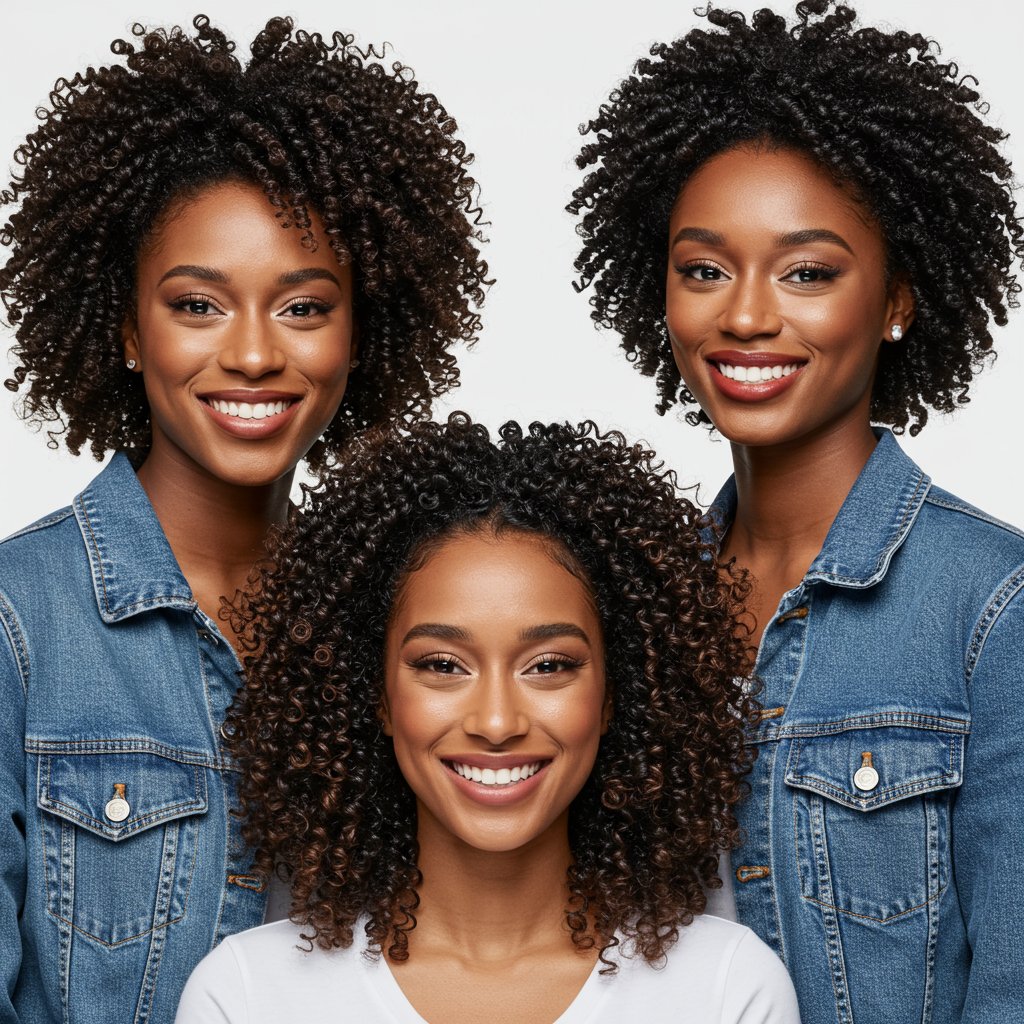
Generally, knotless braids work well for almost all hair types, from fine and straight to thick and coily (like 4C hair). For those with finer hair, the knotless method is particularly beneficial as it puts less strain on delicate strands. The stylist can adjust the amount of extension hair fed in to ensure the braid isn't too heavy. For those with thick, dense hair, knotless braids provide a less bulky and more comfortable alternative to traditional styles.
When it comes to hair length, most stylists recommend having at least two to three inches of natural hair to work with. This provides enough length to start the braid securely before feeding in the extensions. It's crucial to have a consultation with an experienced stylist who can assess your hair's length, density, and overall health. They can advise on the best size (jumbo, medium, or small) and length of braids to ensure the style complements your hair without causing undue stress.
The Knotless Braiding Process: What to Expect at the Salon
Knowing what to expect during your appointment can make the experience smoother and more enjoyable. The knotless braiding process is meticulous and requires a skilled hand, so be prepared for a session that may last several hours, depending on the size and length of your desired braids.
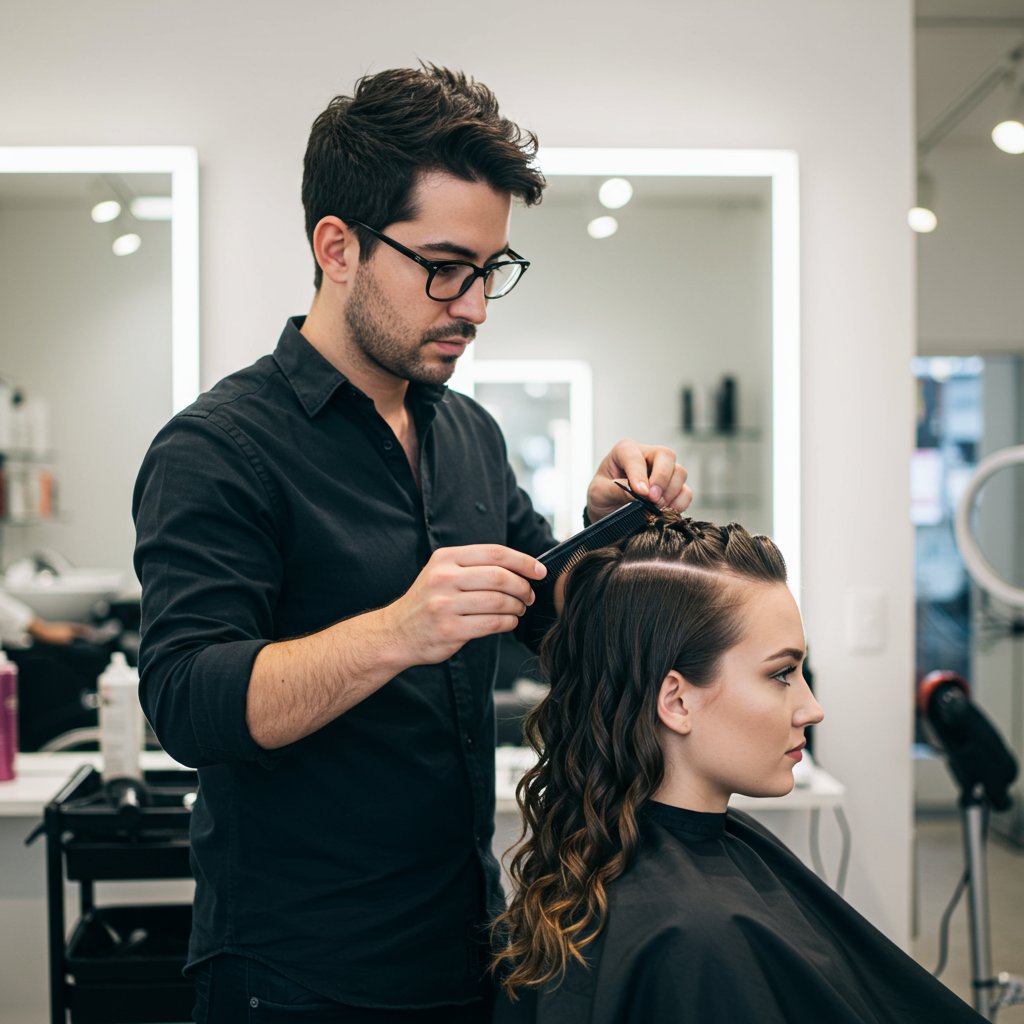
Step 1: Consultation and Hair Prep
Your appointment should begin with a brief consultation. This is your opportunity to discuss your desired look, including braid size, length, and color. The stylist will assess your hair's health. For the best results, you should arrive at the salon with your hair freshly washed, detangled, and thoroughly blow-dried or stretched. A clean, product-free canvas allows the stylist to part your hair cleanly and ensures the braids last longer.Step 2: Sectioning and Parting
Precision is key. Your stylist will meticulously part your hair into clean sections based on the desired braid size. Common parting patterns include square (box), triangular, or even free-form parts. A clean parting grid is the foundation of a neat, professional-looking style.Step 3: The Feed-In Technique Explained
This is where the magic happens. For each section, the stylist will start braiding with just your natural hair. After a few weaves, they will begin to introduce a small piece of pre-stretched extension hair, blending it seamlessly into the braid. They will continue this process, gradually adding more hair until the desired thickness is achieved. This ensures the base remains flat and tension-free.Step 4: Sealing the Ends
The process is completed by sealing the ends of the braids to prevent them from unraveling. The most common method is to dip the ends in hot water, which smooths and seals the synthetic fibers. Alternatively, the ends can be burned (a technique best left to professionals) or curled with rods for a different finish.Knotless Braids Maintenance: Keeping Your Style Fresh and Your Hair Healthy
Proper maintenance is crucial for extending the life of your knotless braids and, more importantly, for maintaining the health of your natural hair underneath. A good routine will prevent product buildup, keep your scalp healthy, and ensure your braids look neat for weeks.
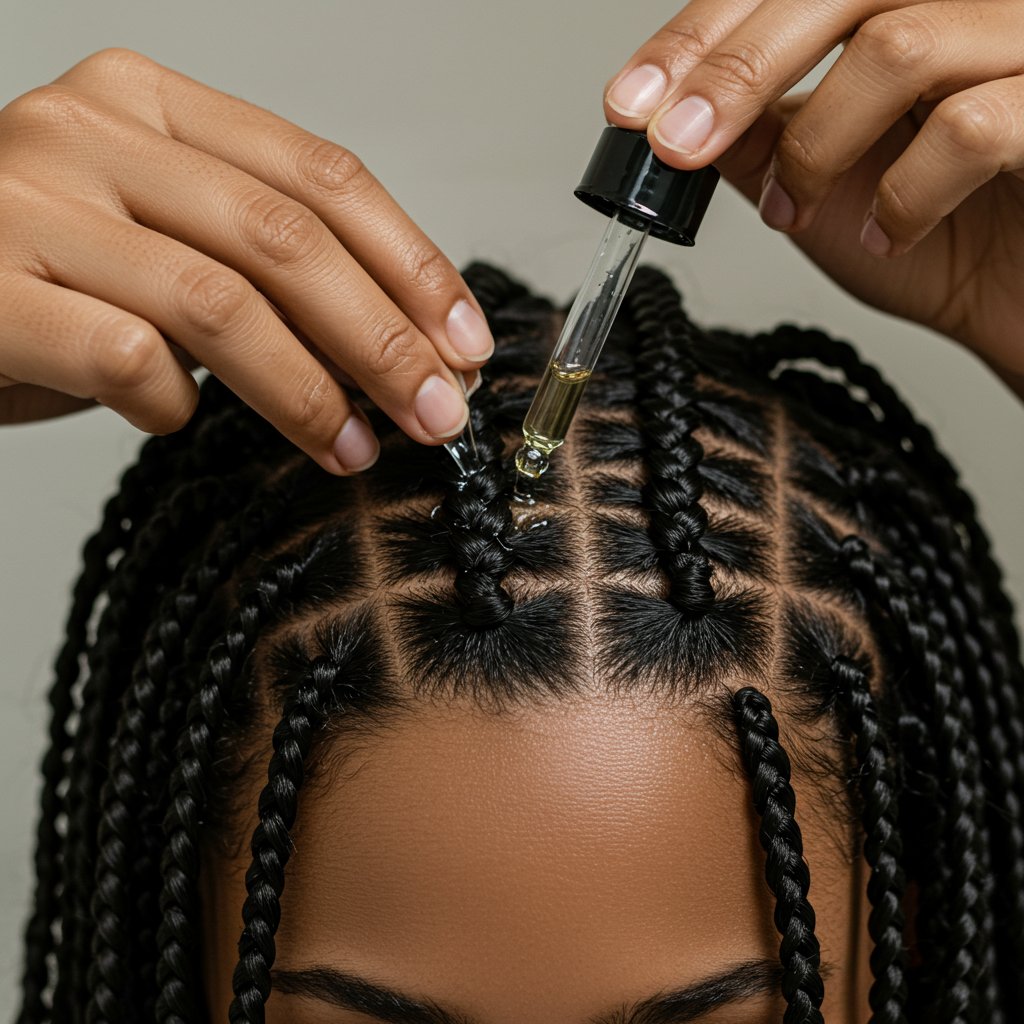
Nighttime Care Routine
Protecting your braids while you sleep is non-negotiable. Tie your hair up and cover it with a silk or satin scarf, bonnet, or by sleeping on a silk/satin pillowcase. This minimizes friction, which helps prevent frizz, flyaways, and moisture loss, keeping your braids looking smoother for longer.Cleansing Your Scalp and Braids
It's important to keep your scalp clean to avoid buildup, itching, and flakes. You can 'wash' your braids every 2-3 weeks. Dilute a sulfate-free shampoo with water in an applicator bottle and apply it directly to your scalp. Gently massage your scalp with the pads of your fingers (not your nails). Rinse thoroughly by letting water run down the length of the braids, gently squeezing out the excess. Follow up with a diluted leave-in conditioner sprayed lightly on the braids to restore moisture.Moisturizing and Sealing
A hydrated scalp is a happy scalp. Regularly spritz your hair and scalp with a light, water-based leave-in conditioner or braid spray. Follow up by applying a lightweight natural oil (like jojoba, grapeseed, or almond oil) to your scalp and the length of your braids to seal in the moisture.How Long Do Knotless Braids Last?
With proper care, knotless braids can last anywhere from four to eight weeks. It is not recommended to keep them in longer than eight weeks, as this can lead to matting of your new growth and potential breakage during the takedown process.Style Inspiration: Creative Ways to Wear Your Knotless Braids
The beauty of knotless braids lies not only in their comfort but also in their incredible styling versatility. From chic and professional to fun and bohemian, the possibilities are endless. The flexibility from day one means you can experiment with different looks immediately.
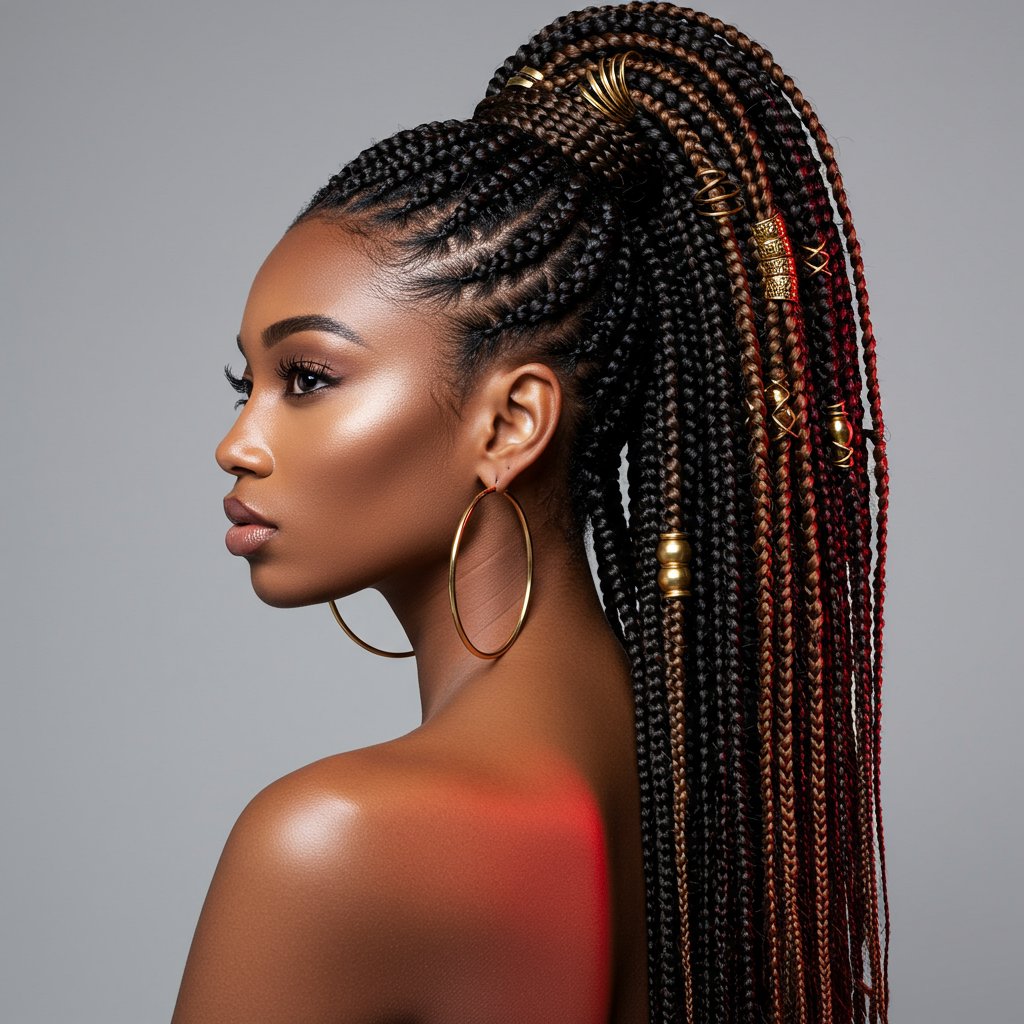
For an everyday elegant look, a simple high or low ponytail showcases the length and movement of the braids. A half-up, half-down style is perfect for a casual yet put-together vibe. For more formal occasions or a touch of drama, a sleek top knot or a sophisticated crown braid can be absolutely stunning. Don’t be afraid to accessorize! Adding gold or silver cuffs, wooden beads, or colorful string can personalize your look and add a unique flair. The seamless base of knotless braids makes them the perfect canvas for any style you can imagine.
Pro Tips for the Best Knotless Braid Experience
To ensure your knotless braid journey is a success from start to finish, keep these professional tips in mind.
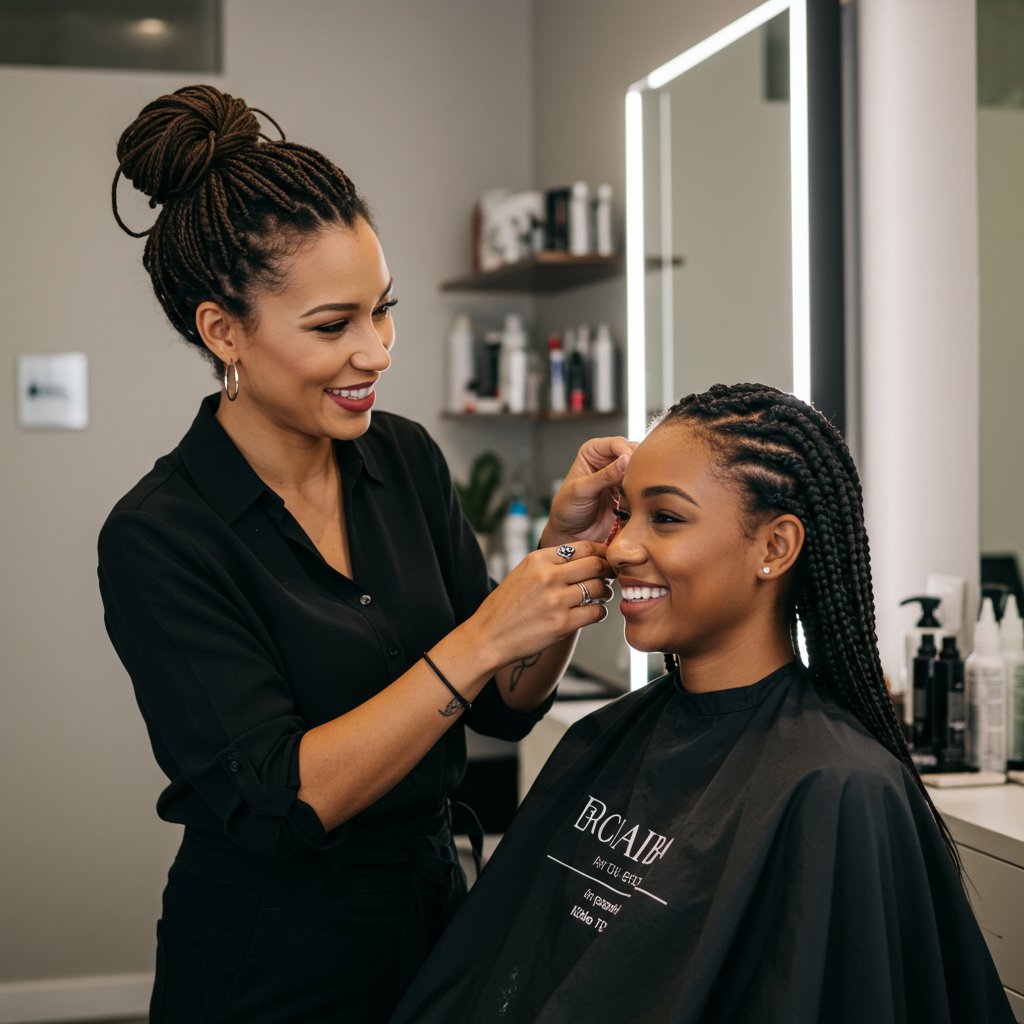
- Choose a Skilled Stylist: The knotless technique requires precision and experience. Research stylists in your area, look at their portfolios, and read reviews. A stylist who specializes in knotless braids will ensure the installation is done correctly and safely.
- Communicate About Tension: Even with a tension-free technique, it's important to speak up. If you feel any pulling or discomfort during the installation, let your stylist know immediately. A good stylist will prioritize the health of your scalp.
- Don't Go Too Small or Too Long: While micro braids can look amazing, they can also put more strain on individual hair strands and take a very long time to install and take down. Similarly, extremely long braids can be heavy. Choose a size and length that won't compromise the health of your hair.
- Proper Takedown is Key: When it's time to remove your braids, be patient. Work in sections, use a spray bottle with a water/conditioner mix to soften your hair, and gently detangle from the ends up to the roots after each braid is removed. Rushing the takedown process can cause significant breakage.
Frequently Asked Questions About Knotless Braids
Q1: Do knotless braids hurt?
No, when installed correctly, knotless braids should be completely painless. The lack of a tight knot at the base means there is no tension on the scalp. You should be able to move your head and style your hair freely immediately after your appointment.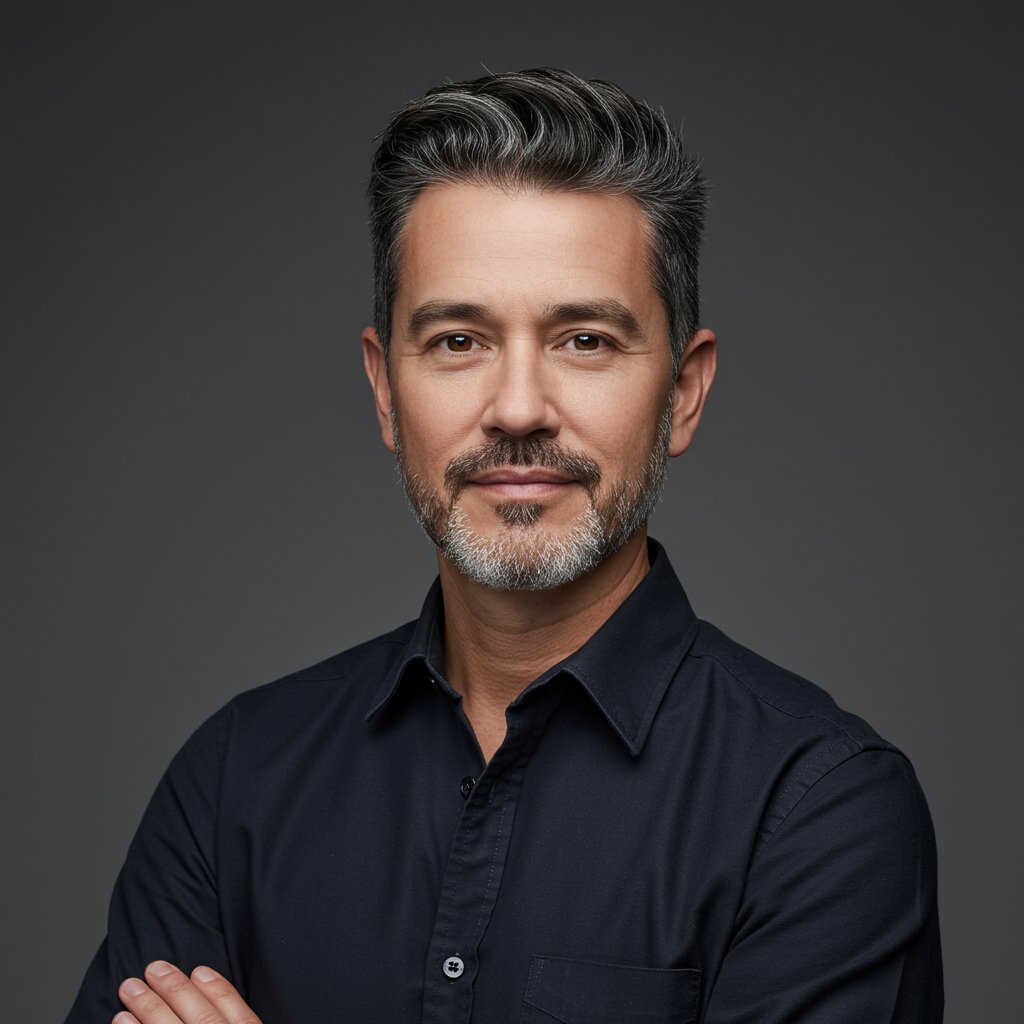
Q2: How much do knotless braids typically cost?
Knotless braids generally cost more than traditional box braids because the process is more intricate and time-consuming. Prices vary widely based on your location, the stylist's experience, and the desired length and size of the braids, but you can expect to pay anywhere from $150 to $600+.Q3: Can I get knotless braids on short hair?
Yes, you can get knotless braids on hair that is as short as 2-3 inches. The feed-in method allows the stylist to securely grip the natural hair and build the braid. However, it's best to consult with a professional to see if your hair is long enough for the style you want.Q4: What kind of hair is best for knotless braids?
Pre-stretched synthetic braiding hair, such as Kanekalon, is the most popular choice for knotless braids. It's lightweight, easy to work with, and can be sealed with hot water. Using pre-stretched hair helps create a smoother, less bulky braid with a tapered, natural-looking end.Q5: How do I safely remove my knotless braids?
To safely remove your braids, cut the braid just below where your natural hair ends. Then, carefully unbraid the extension hair. Once the extension is out, your natural hair will likely have some shed hair and product buildup. Gently work a conditioner or oil through the section to detangle it before moving to the next one. Patience is crucial to prevent breakage.Conclusion: Embrace the Healthy, Beautiful Choice
Knotless braids have rightfully earned their place as a top-tier protective style. They offer the timeless beauty of braids without compromising the health of your hair and scalp. By eliminating tension, promoting growth, and providing unparalleled comfort and versatility, they represent a significant step forward in the world of hair care.
Whether you are a long-time braid enthusiast or considering a protective style for the first time, knotless braids are an exceptional choice. They prove that you don't have to choose between style and health—you can have both. By selecting a skilled professional and committing to a proper maintenance routine, you can enjoy a stunning, long-lasting style that truly protects and nurtures your natural hair on its journey to its healthiest state.

